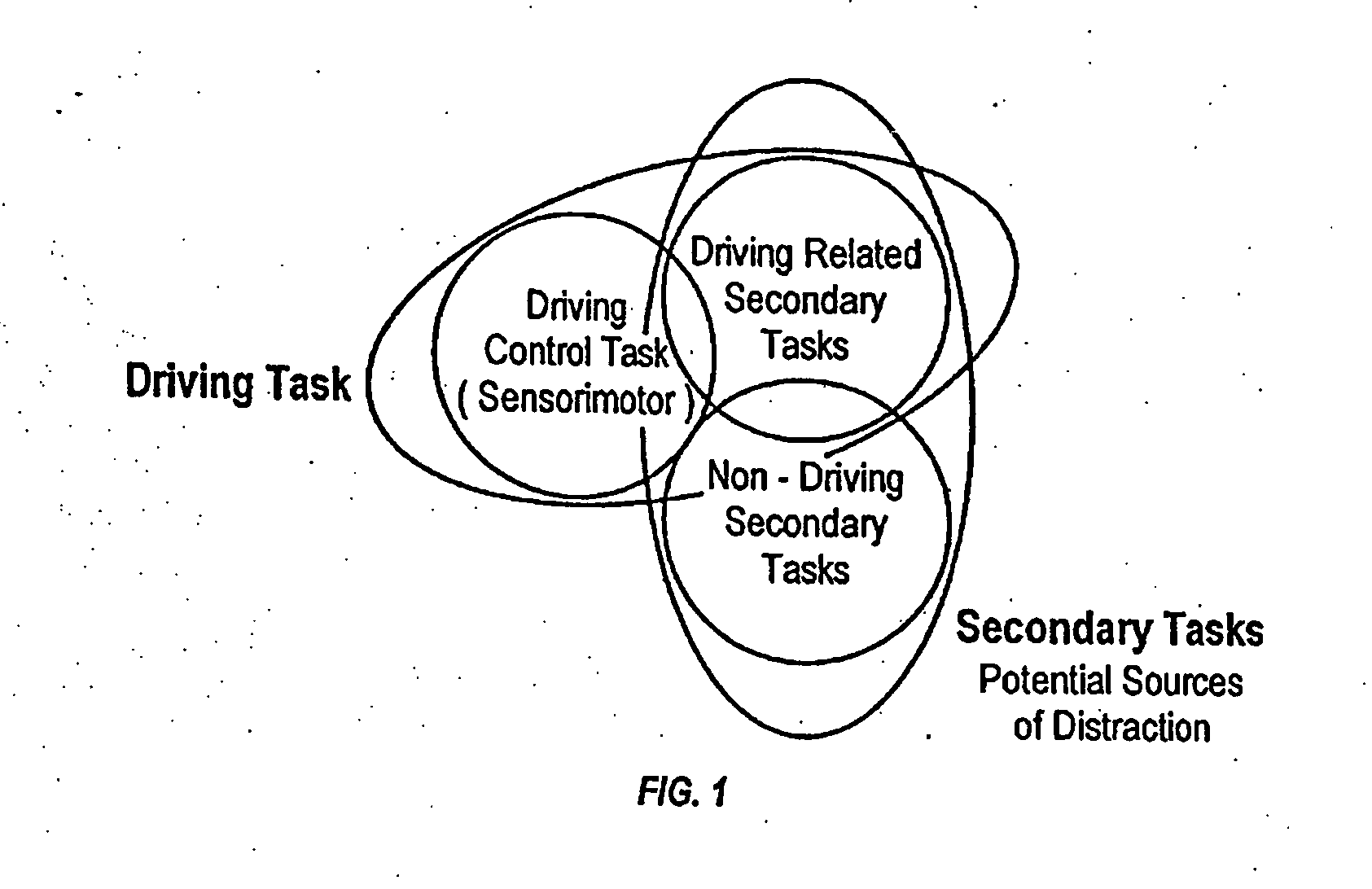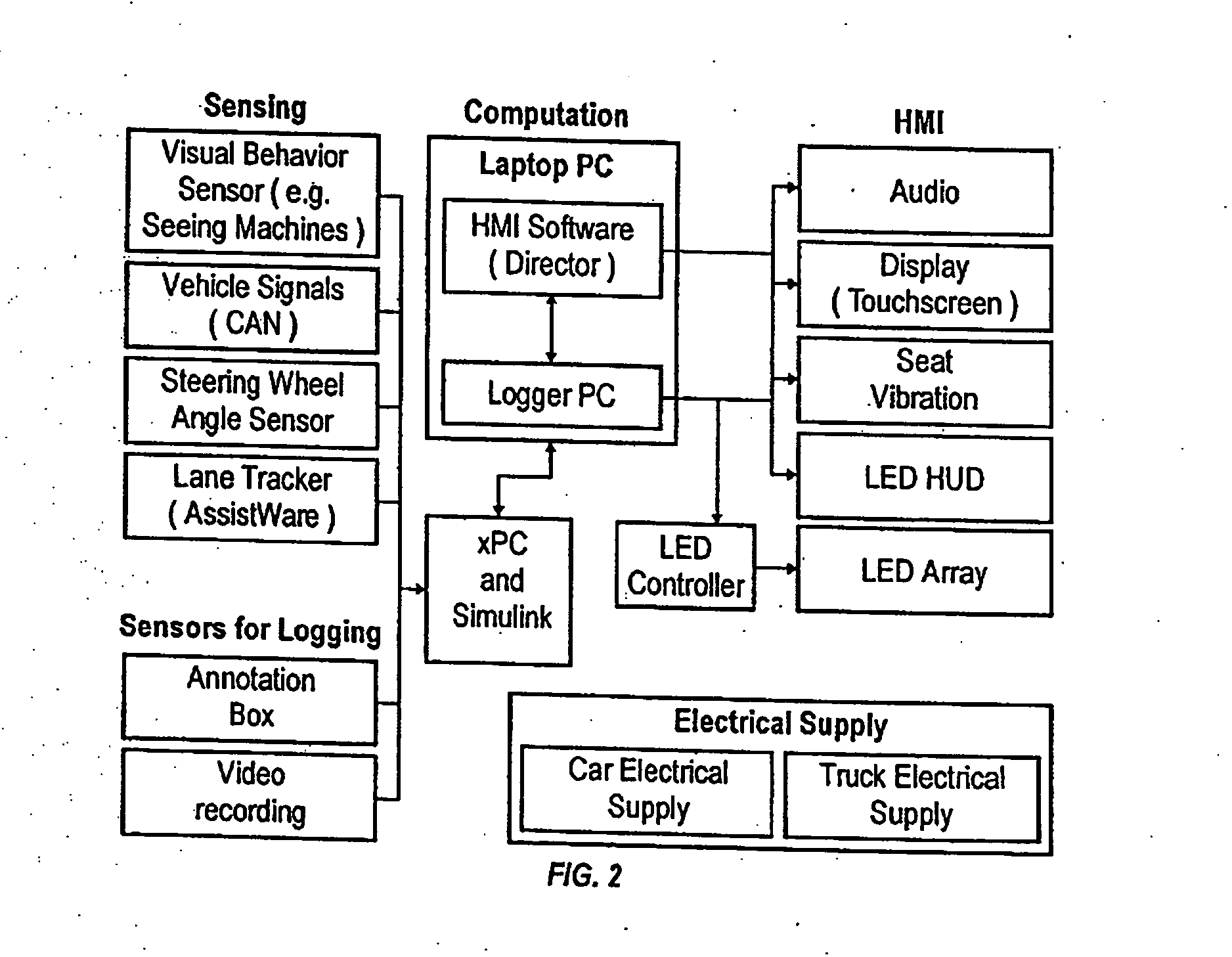Method and arrangement for controlling vehicular subsystems based on interpreted driver activity
a technology for interpreting driver activity and controlling vehicular subsystems, applied in the direction of driver input parameters, dashboard fitting arrangements, alarms, etc., can solve the problems of poor judgment of performance capabilities of humans in general, and particularly as drivers, and not performing uniformly at all times
- Summary
- Abstract
- Description
- Claims
- Application Information
AI Technical Summary
Problems solved by technology
Method used
Image
Examples
Embodiment Construction
[0025] Inattentiveness to driving tasks is an important contributor to vehicle crashes. Inattention (also referred to as inattentiveness) is a state of mind which originates within the driver and has a number of causes. The concepts of drowsiness, distraction, and high workload are outlined herein, and are schematically represented in FIG. 7 as being causes of inattention. Further, inattention can be induced by other factors as well. Driver inattentiveness to driving tasks is also known to derive from, or at least be symptomatically enhanced by the effects of alcohol, illegal drugs, prescription medication, medical conditions, old age, and driver inexperience.
[0026] These different causes of inattention have different symptoms or behavioral “signatures,” and as such, can at times best be identified using specifically tailored sensors and / or detection algorithms. For example, drowsiness detection may employ a sensor that measures eyelid opening, detection of high workload may employ...
PUM
 Login to View More
Login to View More Abstract
Description
Claims
Application Information
 Login to View More
Login to View More - R&D
- Intellectual Property
- Life Sciences
- Materials
- Tech Scout
- Unparalleled Data Quality
- Higher Quality Content
- 60% Fewer Hallucinations
Browse by: Latest US Patents, China's latest patents, Technical Efficacy Thesaurus, Application Domain, Technology Topic, Popular Technical Reports.
© 2025 PatSnap. All rights reserved.Legal|Privacy policy|Modern Slavery Act Transparency Statement|Sitemap|About US| Contact US: help@patsnap.com



